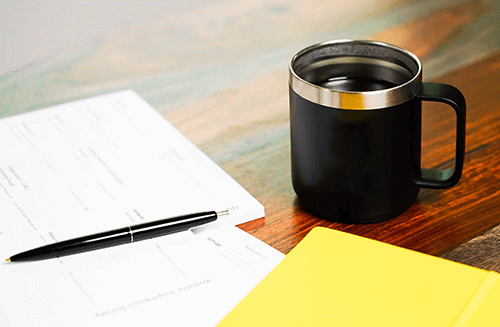
Getting a bridging loan can be both exciting and challenging. To ensure success, the application process requires a well-organised approach and a clear understanding of the steps involved.
In this guide, we'll walk you through the documents needed to apply for a bridging loan.
1. Initial application
The journey begins with a simple application form. Normally, you can start this process online, by giving some basic personal and financial information. This also usually includes the loan amount and term you are looking for. Once you’ve submitted an enquiry, your lender or broker will call you to complete the application process.
Before you apply, it's important you make sure it is the right option for you. Interest rates can be higher than other options, so it may not suit everyone. Therefore, doing some research beforehand is key.
2. Photo ID
Lenders need to confirm your identity to make sure you are not making a fraudulent application. You need to be ready to give official ID documents, such as your driver's license or passport.
3. Banking statements
Lenders want to make sure you can afford the loan. So, you'll need to provide recent banking statements to show your monthly income and outgoings. Lenders may need documents from the last three to six months, so it’s important to confirm this before you submit.
Recent payslips, tax returns, or other income-related documents can also offer lenders an idea of your finances, helping to show them that you're a responsible borrower.
4. Exit strategy
Having a clear exit strategy (your plan to repay the loan) is key; lacking one could result in lenders rejecting your application. It's essential to decide whether you'll sell your property, refinance, or explore other longer-term financial options.
You need to be able to present this to your lender or broker and show it is a viable plan.
5. Evidence of address
The lender will also need evidence of your address. Bills can be helpful, as they usually have your address on them. These need to be recent (usually within the last three months), so the lender can see you are currently living at that property.
6. Property details
If you're buying your dream home and selling a current property, details matter. Expect to give details about both properties involved. This includes purchase and sale agreements, and valuation reports. These documents help lenders to understand everything about the deal.
7. Credit history
To see whether you would be a reliable borrower, lenders will assess your credit history. To do this, a credit check will be carried out.
Don't worry; a credit check is a routine step and a key part of the lender's evaluation process.
If you have a bad credit history, it’s not necessarily the end of your application. Many specialist lenders are able to help in these situations, so it’s worth shopping around to find the right provider.
8. Extra documentation
Depending on your lender and your situation, extra documents may be needed. These could range from proof of assets or property portfolio details (if you’re a developer). Therefore, you must be ready for any extra requests.
Summary
With this guide, you're equipped to approach lenders and brokers to apply for a bridging loan. Bear in mind, each provider may have specific requests, so it’s important to listen carefully and follow their instructions. If you don’t, it could delay your application and hold up your plans.
Think carefully before securing other debts against your home. Your home may be repossessed if you do not keep up repayments on a mortgage or any other debt secured on it.




